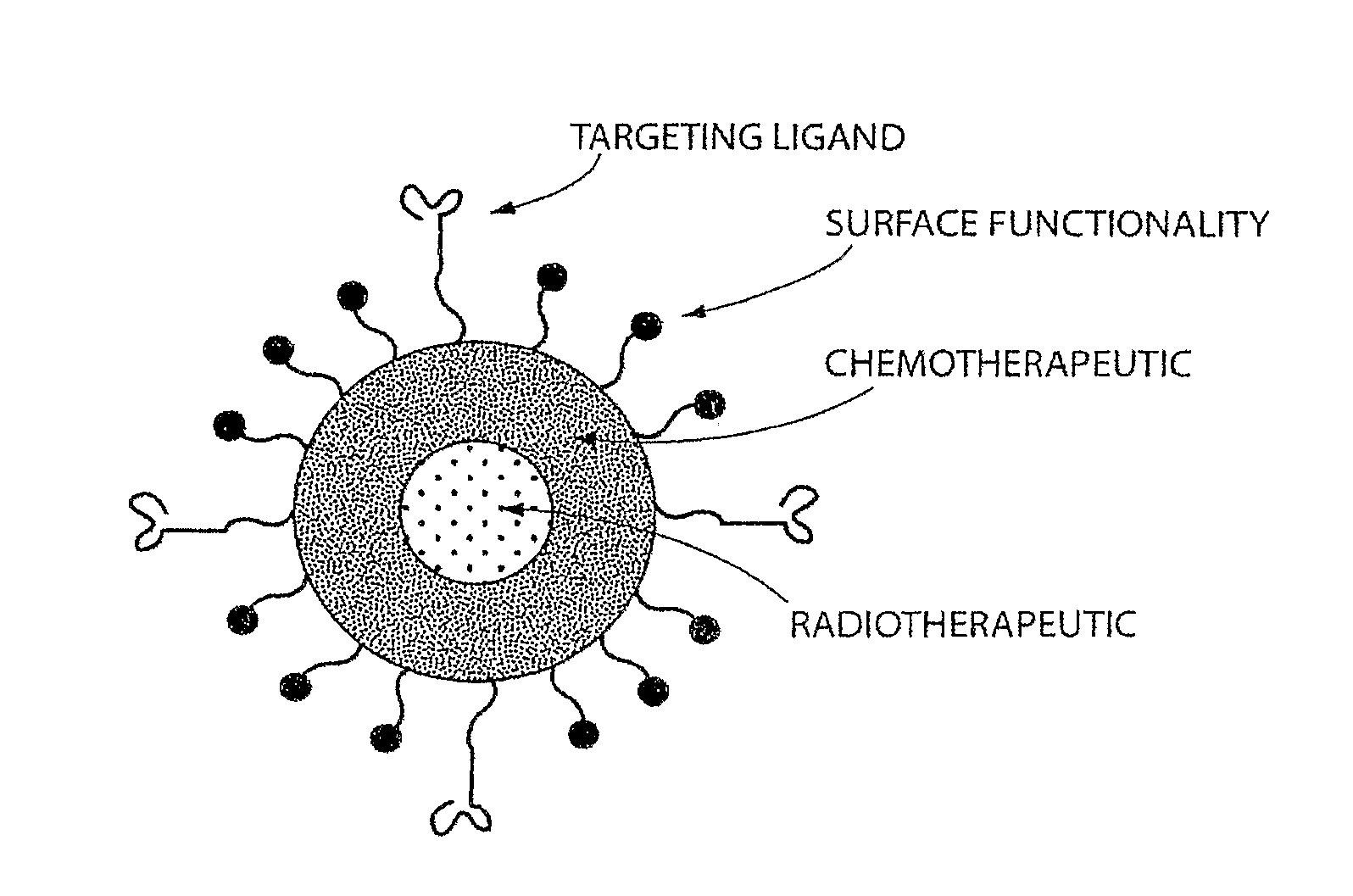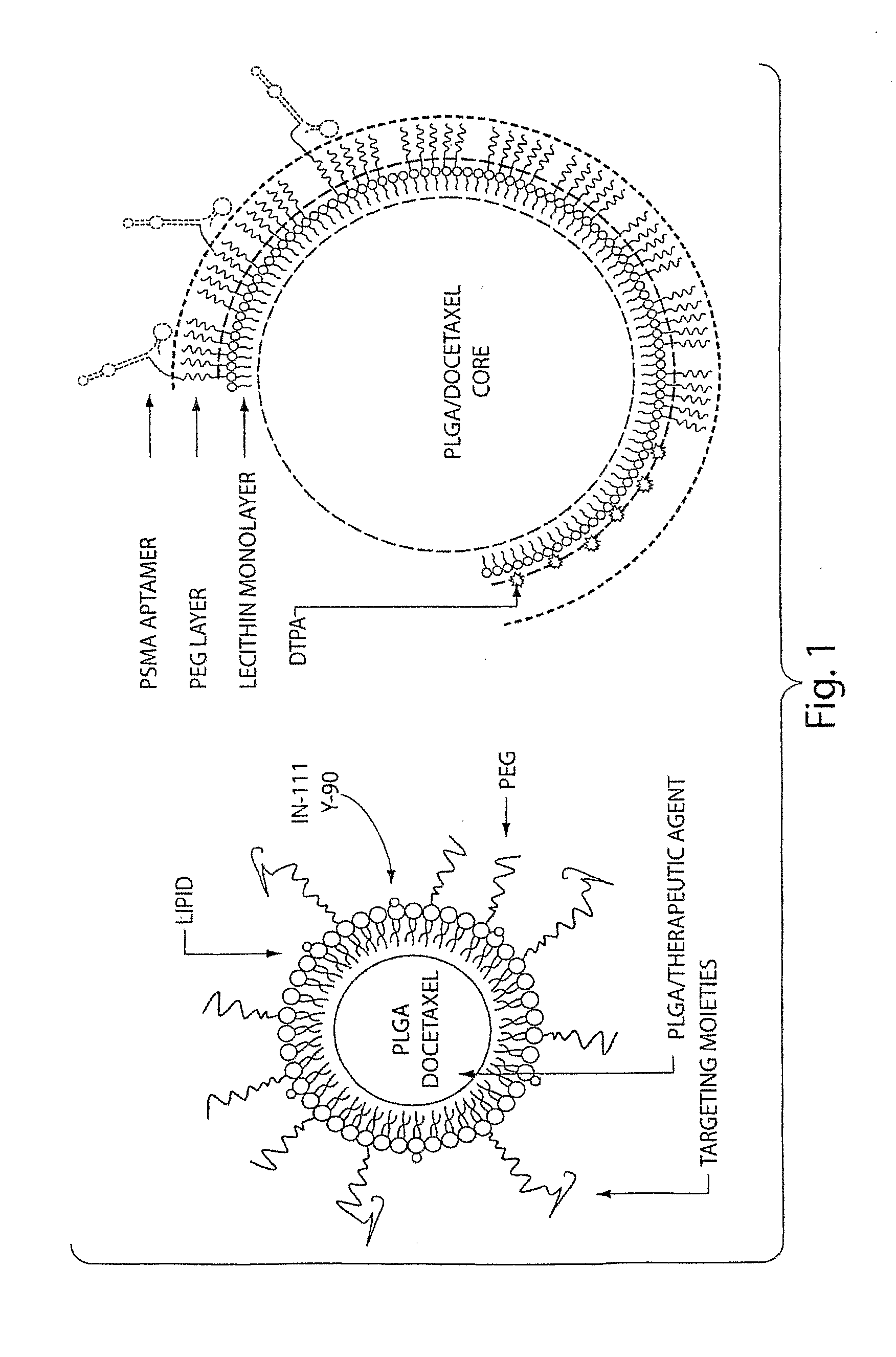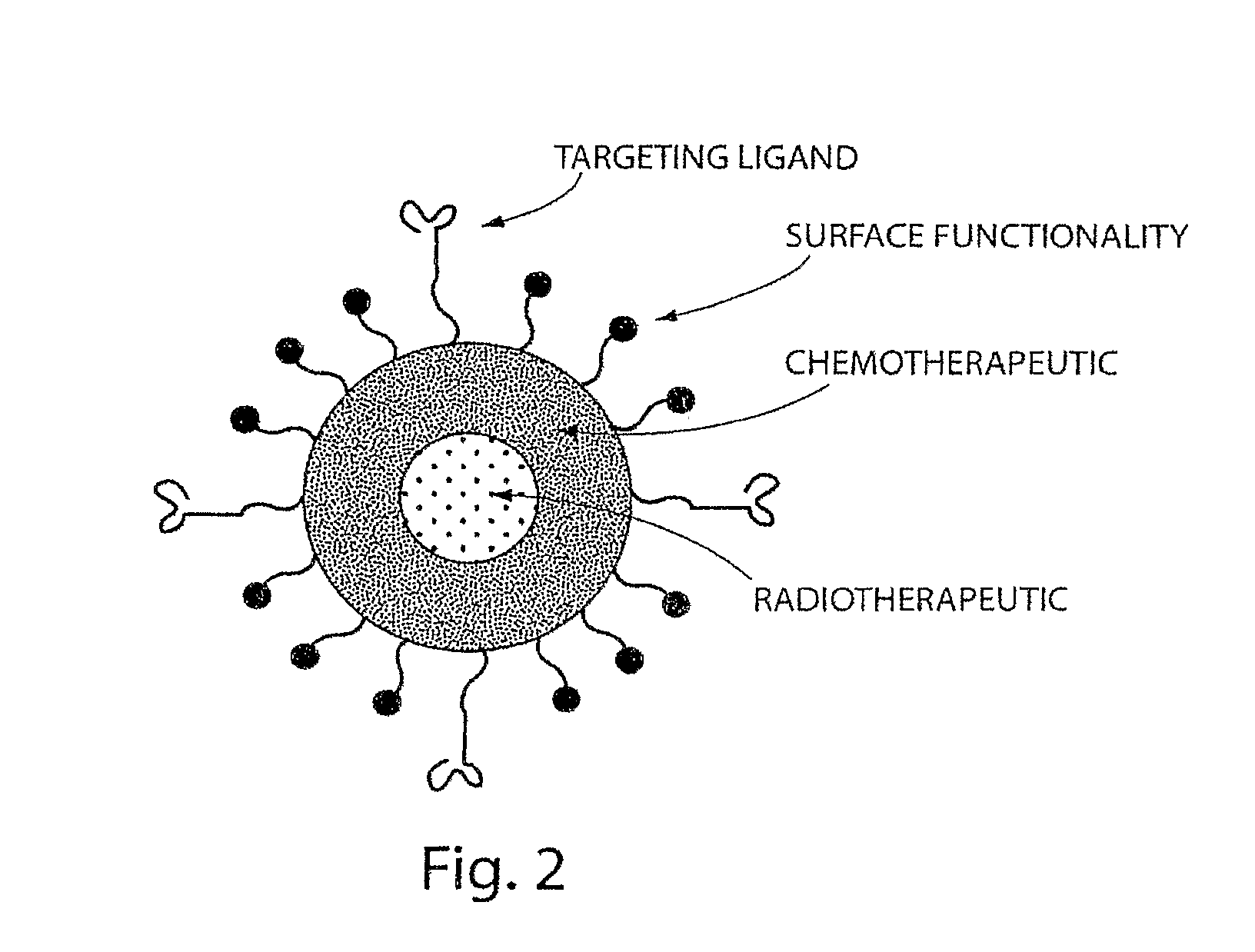Drug delivery system for pharmaceuticals and radiation
a technology for radiation and pharmaceuticals, applied in the field of radiation drug delivery system, can solve the problems of increased toxicity of chemoradiotherapy, serious and sometimes life-threatening side effects, fatigue, etc., and achieve the effects of reducing the risk of cancer, and reducing the effect of radiation radiation
- Summary
- Abstract
- Description
- Claims
- Application Information
AI Technical Summary
Benefits of technology
Problems solved by technology
Method used
Image
Examples
example 1
Preparation of Prostate Cancer Targeting Particle Loaded with Docetaxel and Indium-111
[0344]In this Example, the A10 RNA aptamer which binds to the Prostate Specific Membrane Antigen (PSMA) on the surface of prostate cancer cells is conjugated to DSPE-PEG-COOH (DSPE: 1,2 distearoyl-sn-glycero-3-phosphoethanolamine, sodium salt) using EDC / NHS chemistry with a conjugate concentration of 0.7 mg / mL. 0.21 mg of this DSPE-PEG-aptamer bioconjugate is mixed with 0.07 mg lecithin, and 5.5 ug of DSPE-DTPA in 2 mL aqueous solution containing 4% ethanol. 1 mg poly(D,L-lactic-co-glycolic acid) (PLGA, MW=100 kD) is dissolved in 1 mL acetonitrile (ACN) solvent , to which 10% docetaxel of the mass of PLGA is added. This PLGA solution is then mixed with the aqueous solution of lecithin / DSPE-PEG-aptamer. These mixtures are vortexed for 3 minutes, followed by stirring for 2 hours. In order to remove all organic solvents, these mixtures are then dialyzed for another 4 hours against PBS buffer. This pro...
example 2
In Vivo Tracking of Nanoparticles
[0346]For in vivo tracking of the nanoparticles, 10 mg of nanoparticles were prepared using the method described above in Example 1. The particles were collected using Amicon ultra filters and resuspended in 10 mL of 50 mM ammonium citrate solution (pH 6). 1 mCi of indium-111 was added slowly to a stirred solution of the nanoparticles. Indium-111 was allowed to be chelated onto the surface of the nanoparticles for 45 minutes. The free indium-111 was removed by ultrafiltration (4×). 1 mg (100 μCi) of the nanoparticles was injected through the tail vein into the tumor bearing mice (nude mice with LNCaP xenograft implanted on the flank, grew to around 1 cm in size). The mice were anesthetized and imaged using a small animal SPECT / CT scanner (Gamma Medica, Northbridge, Calif.) at 72 hours post-injections. A representative SPECT / CT image showing uptake of the particles by the tumor is shown in FIG. 9.
PUM
| Property | Measurement | Unit |
|---|---|---|
| diameter | aaaaa | aaaaa |
| diameter | aaaaa | aaaaa |
| diameter | aaaaa | aaaaa |
Abstract
Description
Claims
Application Information
 Login to View More
Login to View More - R&D
- Intellectual Property
- Life Sciences
- Materials
- Tech Scout
- Unparalleled Data Quality
- Higher Quality Content
- 60% Fewer Hallucinations
Browse by: Latest US Patents, China's latest patents, Technical Efficacy Thesaurus, Application Domain, Technology Topic, Popular Technical Reports.
© 2025 PatSnap. All rights reserved.Legal|Privacy policy|Modern Slavery Act Transparency Statement|Sitemap|About US| Contact US: help@patsnap.com



